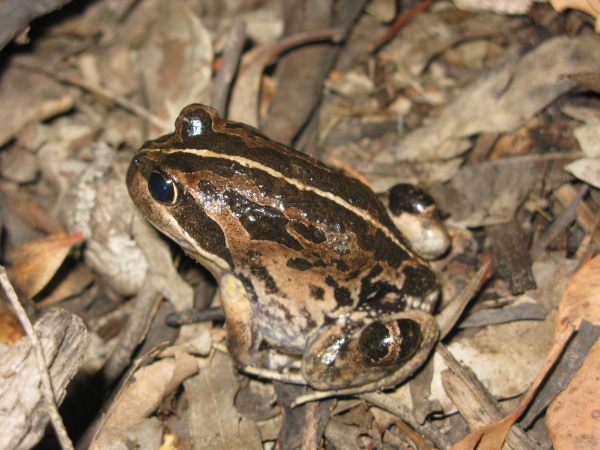Facts About Western Banjo Frog
Meet the Limnodynastes dorsalis, a captivating frog species commonly known by its various evocative names: the western banjo frog, pobblebonk, sand frog, and bullfrog. This unique amphibian hails from Western Australia and is easily recognizable by its robust build, powerful limbs, and characteristic triangular head. Female western banjo frogs can reach up to 87 mm in length, with males being slightly smaller at a maximum of 75 mm.
Their appearance is quite striking—boasting a grey or brownish-olive coloration, adorned with dark blotches and marbling. One of their most noticeable features is a dark stripe running across their eye, accompanied by a reddish to bright red patch near the groin area.
One of the most remarkable aspects of Limnodynastes dorsalis is its call. These frogs produce a loud 'plonk' or 'bonk' sound reminiscent of the plucking of a banjo string, a trait that inspired some of their common names. They prefer to mate in still or slowly moving waters, where they lay a large floating mass of spawn. Regarding their diet, they primarily consume insects and worms but are opportunistic feeders and will eat other small prey as well.
First described in 1841, the Limnodynastes dorsalis is one of twelve species in the Limnodynastes genus found in Australia, and the only one found in the Southwest region. They are typically spotted near permanent water sources throughout Southwest Australia. Although changes in land use have affected their habitat, these frogs have adapted well, particularly benefiting from the construction of dams and other water features that provide new environments for them.
